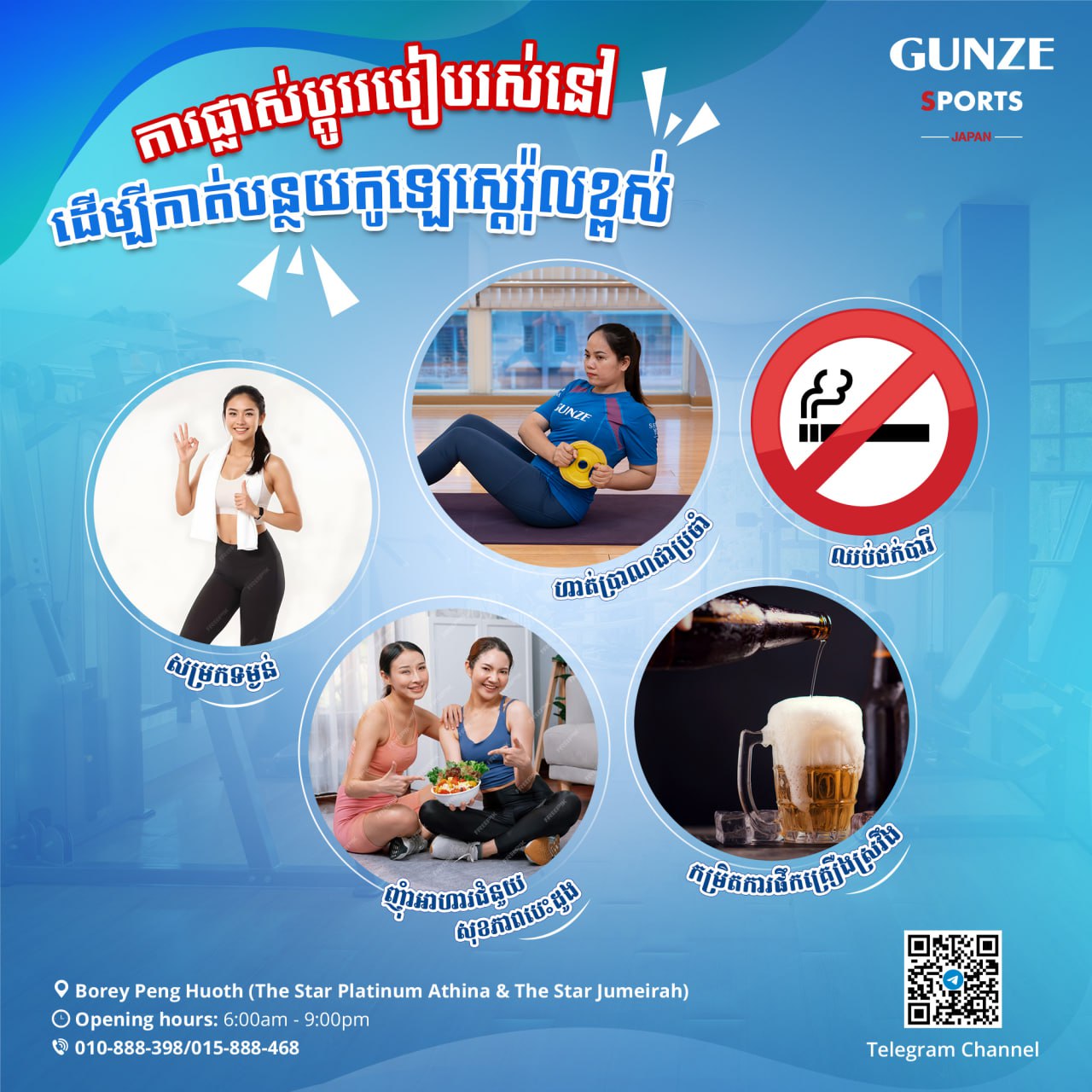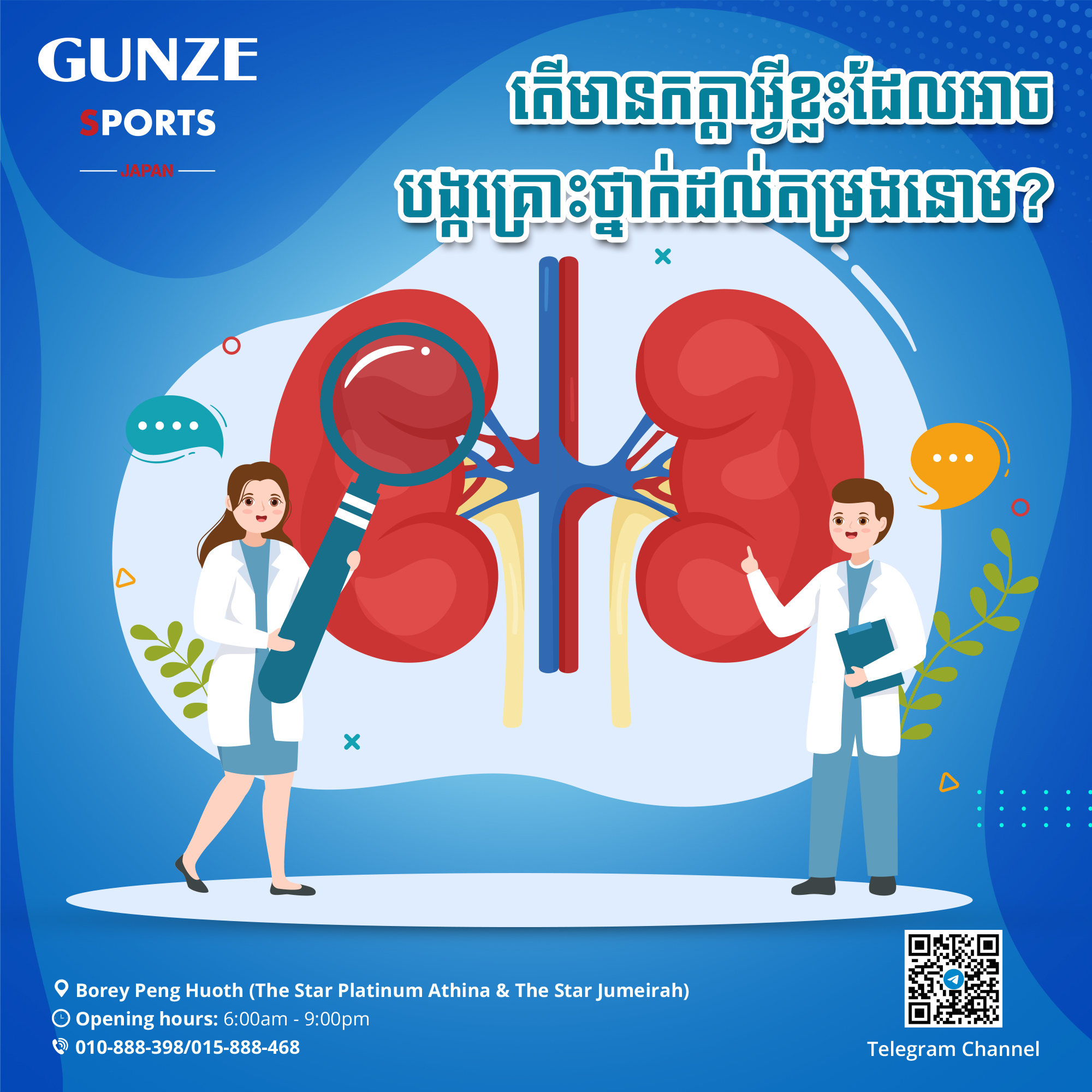
Happy Chinese New Year Promotion at Athina Gym Branch

Benefits of Running for Physical and Mental Health

Happy New Year 2026 Promotion at Jumeirah Branch

BIG New Year Promotion for Mera Garden Branch

Promotion for 1 Day Pass at Jumeirah Branch

What is bone density loss? Does exercise help strengthen bones?

Kids Swimming Package Promotions!

Promotion for 1 Day Pass at Jumeirah Branch

Gunze Sports Jumeirah End-Year Promotion

“Gunze Sports Fun Run for All 2026”

Discover about Sarcopenia

Gunze Sports Mera Garden Water Festival Special Promotions

Gunze Sports Jumeirah Water Festival Special Promotions

Gunze Sports Athina Water Festival Special Promotions

Exercise tips for people with asthma

Survival Swimming Seminar-Mera Garden

Jumeirah special promotions

Weight training twice a week may protect against dementia

Discover Dengue and Severe Dengue

Special Performance by Our Japanese Master Trainer

Happy 1st Anniversary Promotion for Athina and Mera Garden

Happy Jumeirah 1st Anniversary

Preventing Chronic Kidney Disease

2nd season of survival swimming

Ways to Prevent from Lightning

Celebrate the Grand Opening of Gunze Sports Meira Garden!

The grand opening of our newest Gunze Sports gym at Mera Garden, Borey Peng Huoth 60m

What is a stroke? How can we prevent it?

Happy Khmer New Year ! Come and Make Memories together

Exercise Helps Reduce a Risk of Memory Loss

Survival Swimming Seminar

Why Is It Important to Preserve Muscle as You Get Older?

5 exercises for better blood sugar management

How can exercise improve a chronic condition?

New Year, New Goals Get Fit with Our New Year Promotions!

Gunze Sports’ Christmas “Stronger Every Season, Healthier Every Day”!

Gunze Sports Fun Run for All

What health benefits does HIIT bring?

Best Foods for High Blood Pressure

Top 5 lifestyle changes to improve your cholesterol

3 Types of Exercises to Prevent Fatty Liver

What factors can cause kidney issues?

5 habits that you should practice to get a good sleep

Strength training builds more than muscles and prevents Osteoporosis

5 reasons exercise improves sleep

Benefits of strength training for women

Does exercise really boost energy level?

Gunze Sports Gathering Party

Happy Khmer New Year Come and celebrate a joyful and unforgettable moment with us

Training for Running

Love & Fitness for All Run Run together, stay healthy together!

New Year, New Savings, New Fitness Goal Kickstart a healthy New Year with Gunze Sports

Healthy Christmas, Merry Fitness! Join our Christmas fitness sessions

”Survival Swimming” seminar

Special Performance by Our Japanese Master Trainer Jumeirah Branch

Special Performance by Our Japanese Master Trainer

“Survival Swimming” seminar

The grand opening of our newest Gunze Sports gym at Mera Garden, Borey Peng Huoth 60m

Gunze Sports Fun Run for All

Seminar on tips to strengthen health, prevent aging, and relax muscles with GUNZE Sports Japan

Happy Khmer New Year Come and celebrate a joyful and unforgettable moment with us 2024

Love & Fitness for All Run Run

Healthy Christmas, Merry Fitness!

Happy Chinese New Year Promotion at Athina Gym Branch

Benefits of Running for Physical and Mental Health

Happy New Year 2026 Promotion at Jumeirah Branch

BIG New Year Promotion for Mera Garden Branch

Promotion for 1 Day Pass at Jumeirah Branch

What is bone density loss? Does exercise help strengthen bones?

Kids Swimming Package Promotions!

Promotion for 1 Day Pass at Jumeirah Branch

Gunze Sports Jumeirah End-Year Promotion

“Gunze Sports Fun Run for All 2026”

Discover about Sarcopenia

Gunze Sports Mera Garden Water Festival Special Promotions

Gunze Sports Jumeirah Water Festival Special Promotions

Gunze Sports Athina Water Festival Special Promotions

Exercise tips for people with asthma

Survival Swimming Seminar-Mera Garden

Jumeirah special promotions

Weight training twice a week may protect against dementia

Discover Dengue and Severe Dengue

Special Performance by Our Japanese Master Trainer

Happy 1st Anniversary Promotion for Athina and Mera Garden

Happy Jumeirah 1st Anniversary

Preventing Chronic Kidney Disease

2nd season of survival swimming

Ways to Prevent from Lightning

Celebrate the Grand Opening of Gunze Sports Meira Garden!

The grand opening of our newest Gunze Sports gym at Mera Garden, Borey Peng Huoth 60m

What is a stroke? How can we prevent it?

Happy Khmer New Year ! Come and Make Memories together

Exercise Helps Reduce a Risk of Memory Loss

Survival Swimming Seminar

Why Is It Important to Preserve Muscle as You Get Older?

5 exercises for better blood sugar management

How can exercise improve a chronic condition?

New Year, New Goals Get Fit with Our New Year Promotions!

Gunze Sports’ Christmas “Stronger Every Season, Healthier Every Day”!

Gunze Sports Fun Run for All

What health benefits does HIIT bring?

Best Foods for High Blood Pressure

Top 5 lifestyle changes to improve your cholesterol

3 Types of Exercises to Prevent Fatty Liver

What factors can cause kidney issues?

5 habits that you should practice to get a good sleep

Strength training builds more than muscles and prevents Osteoporosis

5 reasons exercise improves sleep

Benefits of strength training for women

Does exercise really boost energy level?

Gunze Sports Gathering Party

Happy Khmer New Year Come and celebrate a joyful and unforgettable moment with us

Training for Running

Love & Fitness for All Run Run together, stay healthy together!

New Year, New Savings, New Fitness Goal Kickstart a healthy New Year with Gunze Sports

Healthy Christmas, Merry Fitness! Join our Christmas fitness sessions

”Survival Swimming” seminar

Special Performance by Our Japanese Master Trainer Jumeirah Branch

Special Performance by Our Japanese Master Trainer

“Survival Swimming” seminar

The grand opening of our newest Gunze Sports gym at Mera Garden, Borey Peng Huoth 60m

Gunze Sports Fun Run for All

Seminar on tips to strengthen health, prevent aging, and relax muscles with GUNZE Sports Japan

Happy Khmer New Year Come and celebrate a joyful and unforgettable moment with us 2024

Love & Fitness for All Run Run

Healthy Christmas, Merry Fitness!




